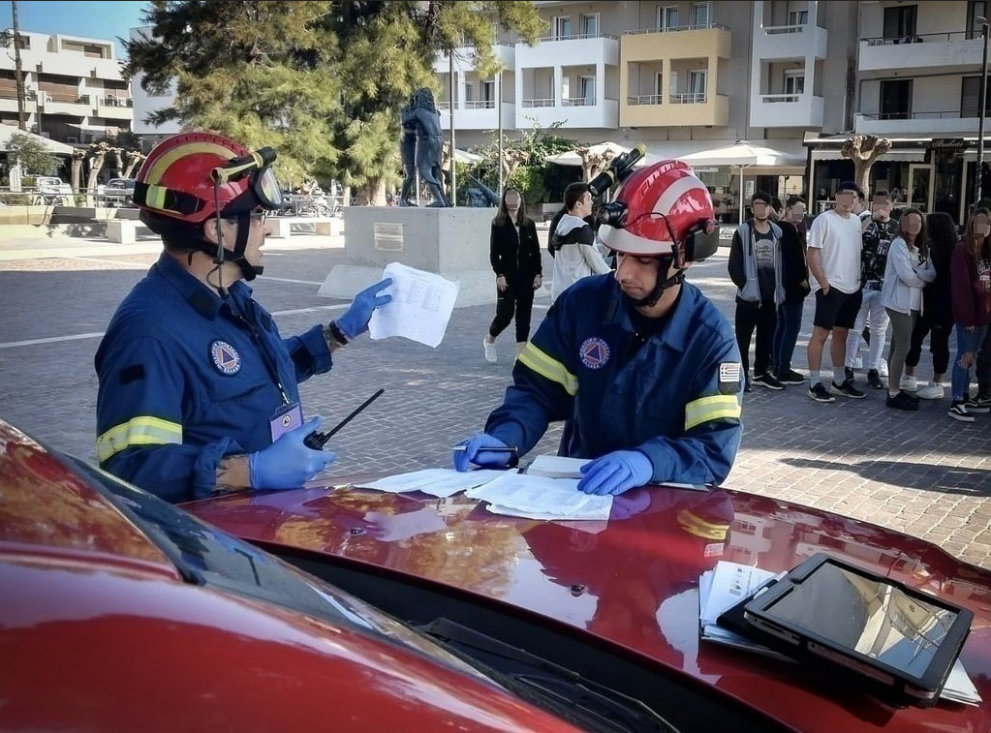
A recent exercise has shown that the EU’s Tsunami Last Mile alert system can save lives by tracking seismic activity and sending warnings in time for local populations to get to safety in the event of a tsunami.
In a world-first, the JRC, emergency services and the local community on the Greek island of Kos ran an emergency response exercise to put the innovative system to the test.
The exercise simulated a sea earthquake of similar magnitude to the one that struck Kos in 2017 and caused a tsunami 1.5m high.
The system on Kos includes sensors to measure seismic waves and sea level, information boards with loudspeakers on the shoreline of Kos and a long-range siren.
For the exercise purpose, warning messages were also sent through the KATWARN mobile phone application.
Pupils of two local schools taking part in the exercise were able to respond to a warning message and reach their respective emergency assembly points within 10 minutes of the initial simulated earthquake.
This timescale could save lives in the future: the 2017 tsunami reached the Kos shoreline 14 minutes after the initial earthquake out at sea.

With 430 participants, the exercise was also successful in raising awareness among the local population on how the warning system works and how to react in case of such events.
Initial observations made during the exercise and the final evaluation of the system will form the basis for future implementations of the Tsunami Last Mile technology.
The concept will move into a second implementation phase, with testing planned for more Mediterranean countries and in Indonesia.
The tsunami exercise on Kos
The exercise started with the simulation of an earthquake that triggered the seismic alerting devices of the Last Mile system.
The earthquake and the possible tsunami generation alert was disseminated through information boards and the sounding of the long-range siren.
Pupils of two local schools took protective measures during the simulated earthquake shaking, before moving from the buildings to the courtyard area.
A few minutes later, tsunami generation was confirmed through virtual recordings of the two tide gauges that have been installed in the port and marina of Kos.
A tsunami alert was issued through the Last Mile technology, calling for residents to move to higher ground.
The schools evacuated to the nearest designated assembly areas though predefined evacuation routes, where dedicated ISO standard signs had been installed prior to the exercise.
In one of the schools there was a report of students being virtually trapped in a classroom, which emergency services responded to, rescuing the injured students and taking them to the General Hospital of Kos.

An open-air clinic was set up by the Hellenic Rescue Team at Antagora Square to provide first aid to the virtually injured. Operations were coordinated by the Civil Protection Officers of the Municipality of Kos from the Emergency Operations Center.
Several messages were issued remotely from the Hellenic National Tsunami Warning Center in Athens during the exercise.
The messages gave information about the earthquake magnitude and the ongoing tsunami watch, and eventually declared the end of the tsunami alert after the simulated wave sequence had subsided.
After the tsunami warning ended, the pupils returned back to their schools and earthquake and tsunami awareness activities took place.
The evaluation of the exercise will be completed after taking into account the inputs of all the evaluators that were present in the various exercise sites.
Improvements based on lessons learned during the exercise will lead to a more effective early warning system and more coordinated operations.
Observations made during the exercise and the final evaluation of the system will form the basis for future implementations of the Tsunami Last Mile technology.
Details
- Publication date
- 10 December 2019
